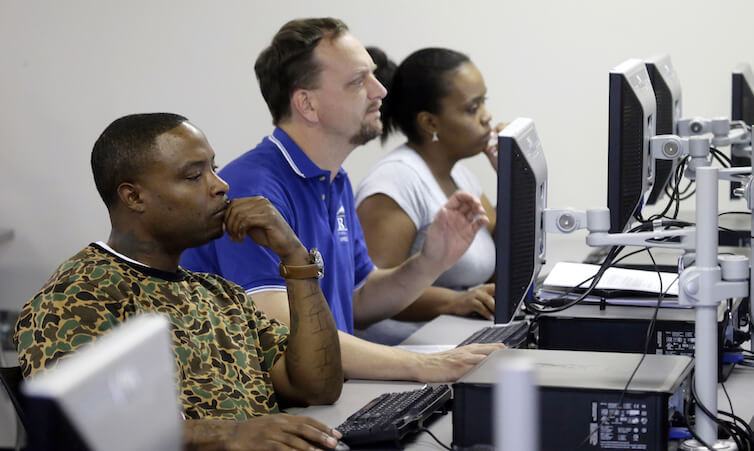Income inequality and economic mobility remain defined largely by race and ethnicity in the United States

Last week, the Congressional Black Caucus held its Annual Legislative Conference, which is intended to discuss those policy issues affecting the black community. The need for a conference of this sort, and for the recent Congressional Hispanic Caucus Institute Leadership Conference, highlights a reality known by many people of color—policies intended to support all families in America often aren’t ones that will help communities of color. Whether because of structural racism, outright discrimination, or a number of other factors, economic inequality and economic mobility look different for different race and ethnic groups. Policymakers ought to consider these differences in order to craft effective policies to assist these communities in achieving equitable economic outcomes in the U.S. labor market and society.
A recent paper from Randall Akee of the University of California, Los Angeles Luskin School of Public Affairs with Maggie R. Jones and Sonya R. Porter of the U.S. Census Bureau sheds some light on just how different income mobility and inequality measures are among and between different race and ethnic groups. The paper provides insight for policymakers looking to address these disparities. In the paper, the researchers use Internal Revenue Service tax data linked at the person level to the U.S. Census Bureau’s race and Hispanic origin data to observe all tax filers over a 15-year period. With this data, the researchers are able to observe income shares, income inequality, and income mobility measures for white, black, American Indian or Alaska Native, Native Hawaiian or Pacific Islander, and Hispanic tax filers.
In 2014, Akee, Jones, and Porter find that—perhaps unsurprisingly—white people tended to have a disproportionately large share of income in the top decile, while Hispanic, black, American Indian or Alaska Native, and Native Hawaiian or Pacific Islander filers accrued a disproportionately large share of income in the bottom of the income distribution. They also find that over the 15-year period in consideration, the rate of income growth for each race or ethnicity at the 90th percentile of the distribution exceeded that of the 50th percentile. That means that the top income earners of all races are pulling away from the rest of the people in their race or ethnic group.
Meanwhile, at the bottom half of the income ladder, there is some increase in income inequality due to the 50th percentile pulling away from the bottom 10th percentile, but only white tax filers experienced an increase in income inequality due to a decrease in the income level at the 10th percentile. But even this finding requires a nuanced understanding of how conditions vary by race and ethnicity, as the 10th percentile for black filers is $9,061—nearly 35 percent less than the $13,914 for white filers. If policymakers want to address inequality, they must take these differences into account.
In addition to these findings, the researchers take a look at income mobility both within and between race and ethnic groups. They find that income mobility decreased for all race and ethnic groups between 2000 and 2014, which may not be surprising given the impact of the Great Recession in the middle of that period. But the study notes that this decrease is not equal for all groups. Blacks, Hispanics, and American Indians are more immobile than other groups, and those same groups have a higher probability of having seen downward income mobility over the period studied than whites and Asians.
So, not only are the people at the high end of the income distribution pulling away from the rest of the population, but these gains are accruing disproportionately to a few race groups. The researchers note that “these details belie key beliefs within the United States that a person can ‘get ahead’ regardless of race and ethnic origin, and that race doesn’t matter independently from class.” Essentially, without considering the myriad ways in which race and ethnic inequality is calcified in the U.S. economy, policies will not be able to increase mobility for all workers.
Many Americans may overstate levels of racial economic equality, but the reality is that differences between different race and ethnic groups exist. As policymakers craft policies, they should consider how they can help make the labor market work for these different communities in an effort to increase mobility and decrease inequality across groups.

